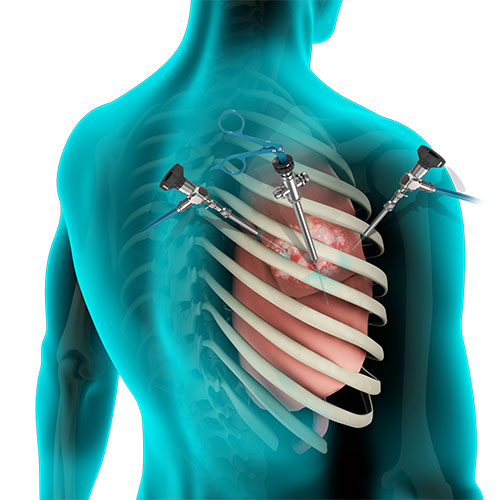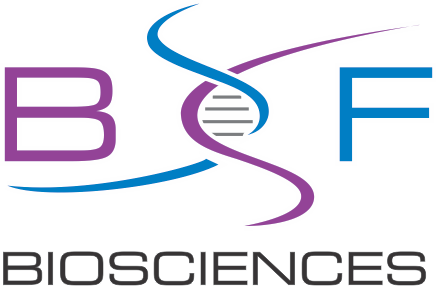BACKGROUND
Lung cancer is a type of cancer that begins in the lungs. Your lungs are two spongy organs in your chest that take in oxygen when you inhale and release carbon dioxide when you exhale.
People who smoke have the greatest risk of lung cancer. The risk of lung cancer increases with the length of time and number of cigarettes you’ve smoked. If you quit smoking, even after smoking for many years, you can significantly reduce your chances of developing lung cancer.
DISEASE OCCURRENCE IN POPULATION
Cancer is the second leading cause of death globally, and is responsible for an estimated 9.6 million deaths in 2018. Globally, about 1 in 6 deaths is due to cancer. Tobacco use is the most important risk factor for cancer and is responsible for approximately 22% of cancer deaths.
In 2018, according to the GLOBOCAN estimates, there were 2,093,876 (11.6%) new cases of lung cancer identified worldwide. Lung cancer is the most commonly diagnosed cancer (11.6% of the total cases) and the leading cause of cancer death (18.4% of the total cancer deaths). In 2018, there were an estimated 1,761,007 deaths from lung cancer occurred worldwide (18.4% of the total number of cancer deaths).
According to GLOBOCAN 2018, Pakistan has 9,771 (6.58%) new cases of lung cancer which makes it 3rd most common cancer in Pakistan. An estimated 9,260 (9.07%) deaths occurred in Pakistan due to lung cancer.

RISK FACTORS
Risk factors for lung cancer include:
- Smoking – Your risk of lung cancer increases with the number of cigarettes you smoke each day and the number of years you have smoked. Quitting at any age can significantly lower your risk of developing lung cancer.
- Exposure to second-hand smoke – Even if you don’t smoke, your risk of lung cancer increases if you’re exposed to second-hand smoke.
- Exposure to radon gas – Radon is produced by the natural breakdown of uranium in soil, rock and water that eventually becomes part of the air you breathe. Unsafe levels of radon can accumulate in any building, including homes.
- Exposure to asbestos and other carcinogens – Workplace exposure to asbestos and other substances known to cause cancer such as arsenic, chromium and nickel — also can increase your risk of developing lung cancer, especially if you’re a smoker.
- Family history of lung cancer – People with a parent, sibling or child with lung cancer have an increased risk of the disease
SIGN AND SYMPTOMS
The most common symptoms of lung cancer are:
- A cough that does not go away or gets worse
- Coughing up blood or rust-colored sputum (spit or phlegm)
- Chest pain that is often worse with deep breathing, coughing, or laughing
- Hoarseness
- Weight loss and loss of appetite
- Shortness of breath
- Feeling tired or weak
- Infections such as bronchitis and pneumonia that don’t go away or keep coming back
- New onset of wheezing
If lung cancer spreads to distant organs, it may cause:
- Bone pain (like pain in the back or hips)
- Nervous system changes (such as headache, weakness or numbness of an arm or leg, dizziness, balance problems, or seizures), from cancer spread to the brain or spinal cord
- Yellowing of the skin and eyes (jaundice), from cancer spread to the liver
Lumps near the surface of the body, due to cancer spreading to the skin or to lymph nodes (collections of immune system cells), such as those in the neck or above the collarbone
DIAGNOSTIC TESTS
Testing healthy people for lung cancer
People with an increased risk of lung cancer may consider annual lung cancer screening using low-dose CT scans. Lung cancer screening is generally offered to people 55 and older who smoked heavily for many years and are otherwise healthy.
Tests to diagnose lung cancer
If there’s reason to think that you may have lung cancer, your doctor can order a number of tests to look for cancerous cells and to rule out other conditions.
Tests may include:
- Imaging tests: An X-ray image of your lungs may reveal an abnormal mass or nodule. A CT scan can reveal small lesions in your lungs that might not be detected on an X-ray.
- Sputum cytology: If you have a cough and are producing sputum, looking at the sputum under the microscope can sometimes reveal the presence of lung cancer cells.
- Tissue sample (biopsy): A sample of abnormal cells may be removed in a procedure called a biopsy.
Your doctor can perform a biopsy in a number of ways, including bronchoscopy, in which your doctor examines abnormal areas of your lungs using a lighted tube that’s passed down your throat and into your lungs; mediastinoscopy, in which an incision is made at the base of your neck and surgical tools are inserted behind your breastbone to take tissue samples from lymph nodes; and needle biopsy, in which your doctor uses X-ray or CT images to guide a needle through your chest wall and into the lung tissue to collect suspicious cells.
A biopsy sample may also be taken from lymph nodes or other areas where cancer has spread, such as your liver.
Careful analysis of your cancer cells in a lab will reveal what type of lung cancer you have. Results of sophisticated testing can tell your doctor the specific characteristics of your cells that can help determine your prognosis and guide your treatment.
Tests to determine the extent of the cancer
Once your lung cancer has been diagnosed, your doctor will work to determine the extent (stage) of your cancer. Your cancer’s stage helps you and your doctor decide what treatment is most appropriate.
Staging tests may include imaging procedures that allow your doctor to look for evidence that cancer has spread beyond your lungs. These tests include CT, MRI, positron emission tomography (PET) and bone scans. Not every test is appropriate for every person, so talk with your doctor about which procedures are right for you.
TREATMENT OPTIONS
Surgery
During surgery your surgeon works to remove the lung cancer and a margin of healthy tissue. Procedures to remove lung cancer include:
- Wedge resectionto remove a small section of lung that contains the tumor along with a margin of healthy tissue.
- Segmental resectionto remove a larger portion of lung, but not an entire lobe.
- Lobectomyto remove the entire lobe of one lung
- Pneumonectomyto remove an entire lung.
Chemotherapy
Chemotherapy uses drugs to kill cancer cells. One or more chemotherapy drugs may be given through a vein in your arm (intravenously) or taken orally. A combination of drugs usually is given in a series of treatments over a period of weeks or months, with breaks in between so that you can recover.
Chemotherapy is often used after surgery to kill any cancer cells that may remain. It may also be used before surgery to shrink cancers and make them easier to remove.
Radiation therapy
Radiation therapy uses high-powered energy beams from sources such as X-rays and protons to kill cancer cells. Radiation therapy can be directed at your lung cancer from outside your body (external beam radiation) or it can be put inside needles, seeds or catheters and placed inside your body near the cancer (brachytherapy).
Targeted drug therapy
Targeted therapies are newer cancer treatments that work by targeting specific abnormalities in cancer cells. Targeted therapy drugs are often used in combination with chemotherapy drugs.
Targeted therapy options for treating lung cancer include:
- Afatinib
- Bevacizumab
- Ceritinib
- Crizotinib
- Erlotinib
- Nivolumab
- Ramucirumab
Palliative care
People with lung cancer often experience signs and symptoms of the cancer, as well as side effects of treatment. Supportive care, also known as palliative care, is a specialty area of medicine that involves working with a doctor to minimize your signs and symptoms.
PRECAUTIONS
There’s no sure way to prevent lung cancer, but you can reduce your risk if you:
- Don’t smoke – If you’ve never smoked, don’t start.
- Stop smoking – Stop smoking now. Quitting reduces your risk of lung cancer, even if you’ve smoked for years. Talk to your doctor about strategies and stop-smoking aids that can help you quit. Options include nicotine replacement products, medications and support groups.
- Avoid second-hand smoke – If you live or work with a smoker, urge him or her to quit. At the very least, ask him or her to smoke outside. Avoid areas where people smoke, such as bars and restaurants, and seek out smoke-free options.
- Test your home for radon – Have the radon levels in your home checked, especially if you live in an area where radon is known to be a problem.
- Avoid carcinogens at work- Take precautions to protect yourself from exposure to toxic chemicals at work. Follow your employer’s precautions. For instance, if you’re given a face mask for protection, always wear it. Ask your doctor what more you can do to protect yourself at work. Your risk of lung damage from workplace carcinogens increases if you smoke.
- Eat a diet full of fruits and vegetables-Choose a healthy diet with a variety of fruits and vegetables. Food sources of vitamins and nutrients are best. Avoid taking large doses of vitamins in pill form, as they may be harmful. For instance, researchers hoping to reduce the risk of lung cancer in heavy smokers gave them beta carotene supplements. Results showed the supplements actually increased the risk of cancer in smokers.
Exercise most days of the week- If you don’t exercise regularly, start out slowly. Try to exercise most days of the week.
REFERENCES
- GBD 2015 Risk Factors Collaborators. Global, regional, and national comparative risk assessment of 79 behavioural, environmental and occupational, and metabolic risks or clusters of risks, 1990-2015: a systematic analysis for the Global Burden of Disease Study 2015. Lancet. 2016 Oct; 388 (10053):1659-1724
- Bray F, Ferlay J, Soerjomataram I, Siegel R, Torre L, Jemal A. Global cancer statistics 2018: GLOBOCAN estimates of incidence and mortality worldwide for 36 cancers in 185 countries. CA: A Cancer Journal for Clinicians. 2018;68(6):394-424.
- http://www.mayoclinic.org/diseases-conditions/lung-cancer/basics/risk-factors/con-20025531
- American Cancer Society. Sign and Symptoms of Lung Cancer [Internet]. Atlanta: American Cancer Society [cited 2019 Jan 10] Available from https://www.cancer.org/cancer/lung-cancer/prevention-and-early-detection/signs-and-symptoms.html
- https://www.mayoclinic.org/diseases-conditions/lung-cancer/diagnosis-treatment/drc-20374627
- Giandomenico Roviello. The distinctive nature of adenocarcinoma of the lung.Onco Targets Ther. 2015; 8: 2399–2406.2015 Sep 2. doi: 10.2147/OTT.S89225
- http://www.mayoclinic.org/diseases-conditions/lung-cancer/basics/prevention/con-20025531
